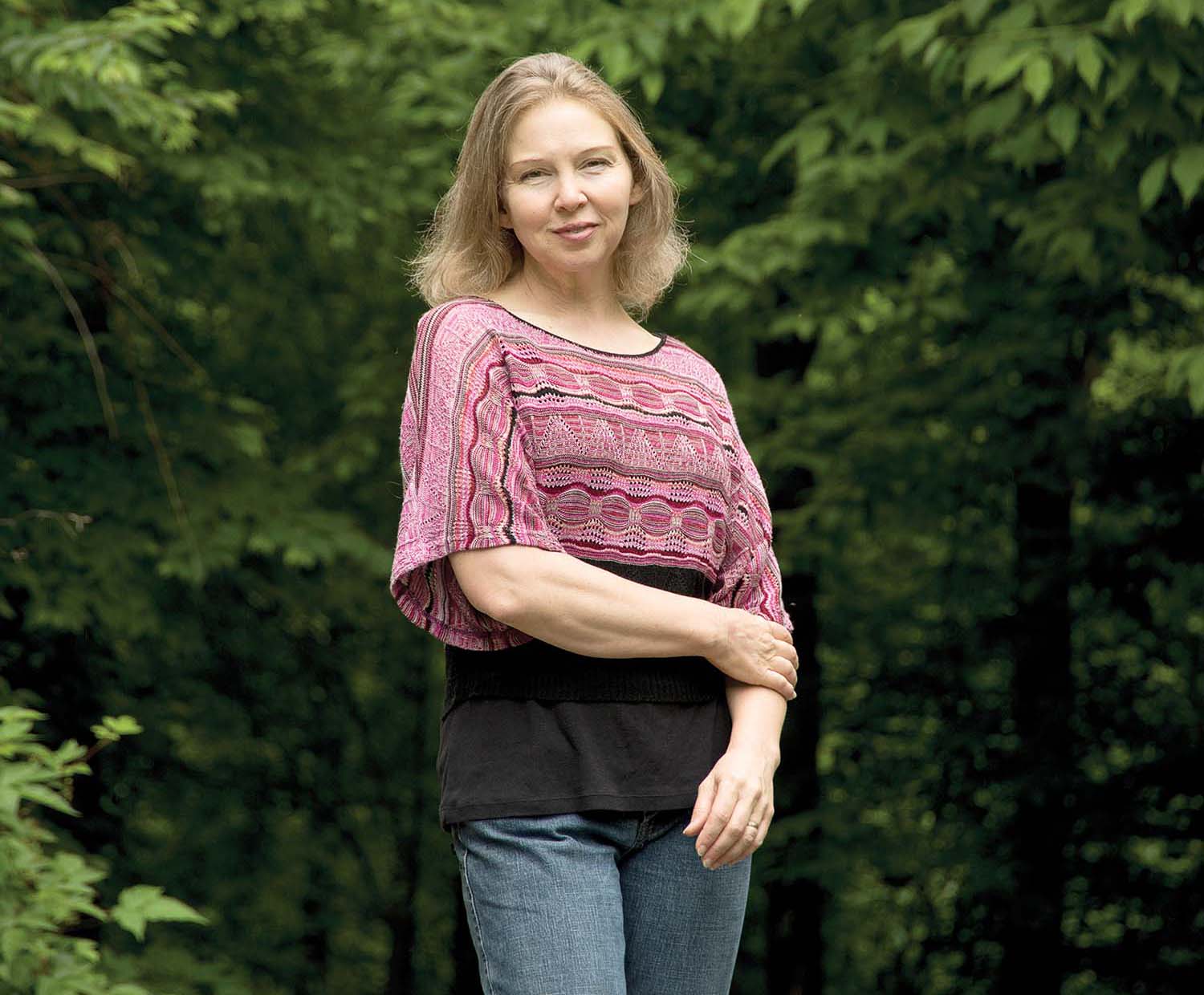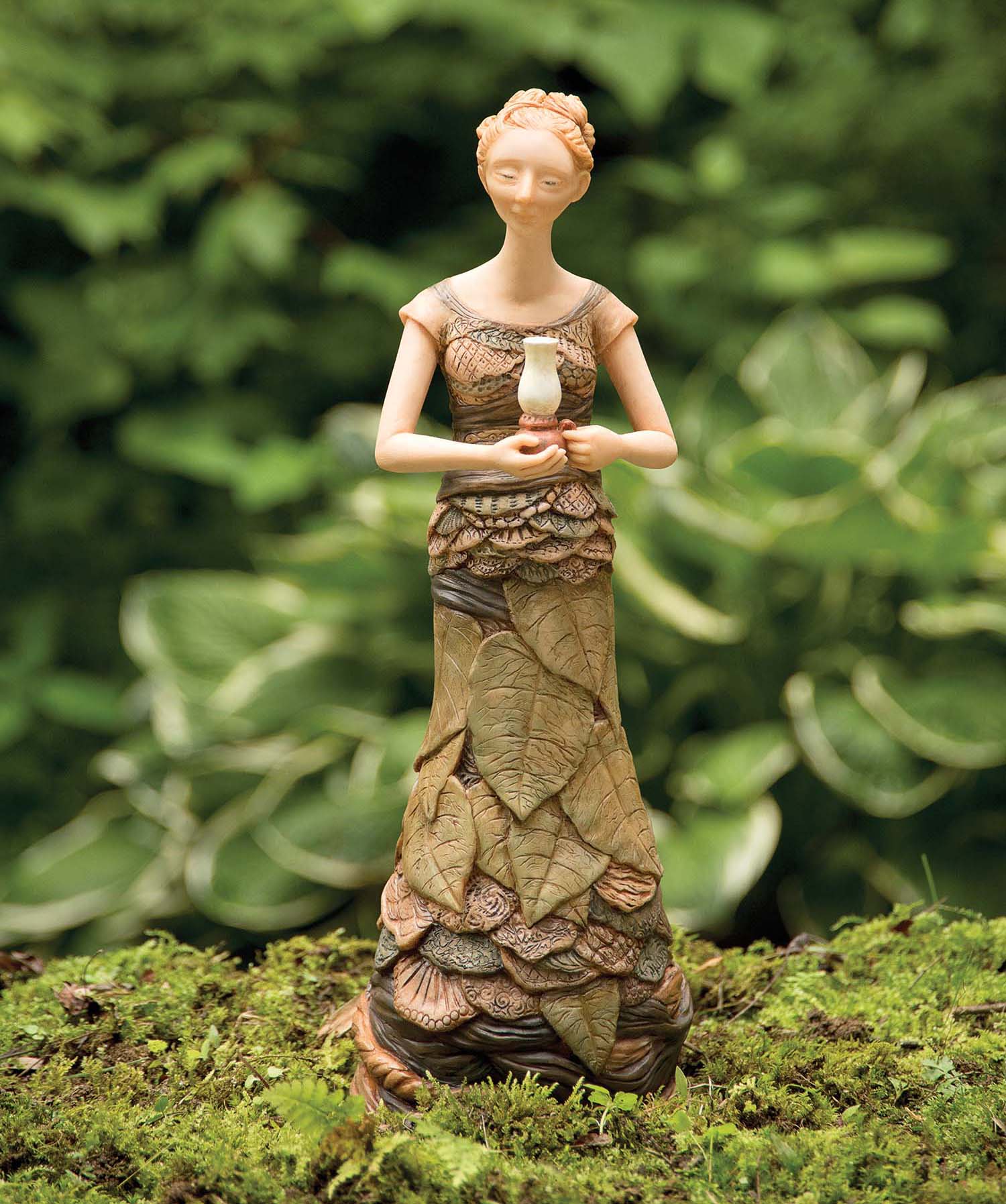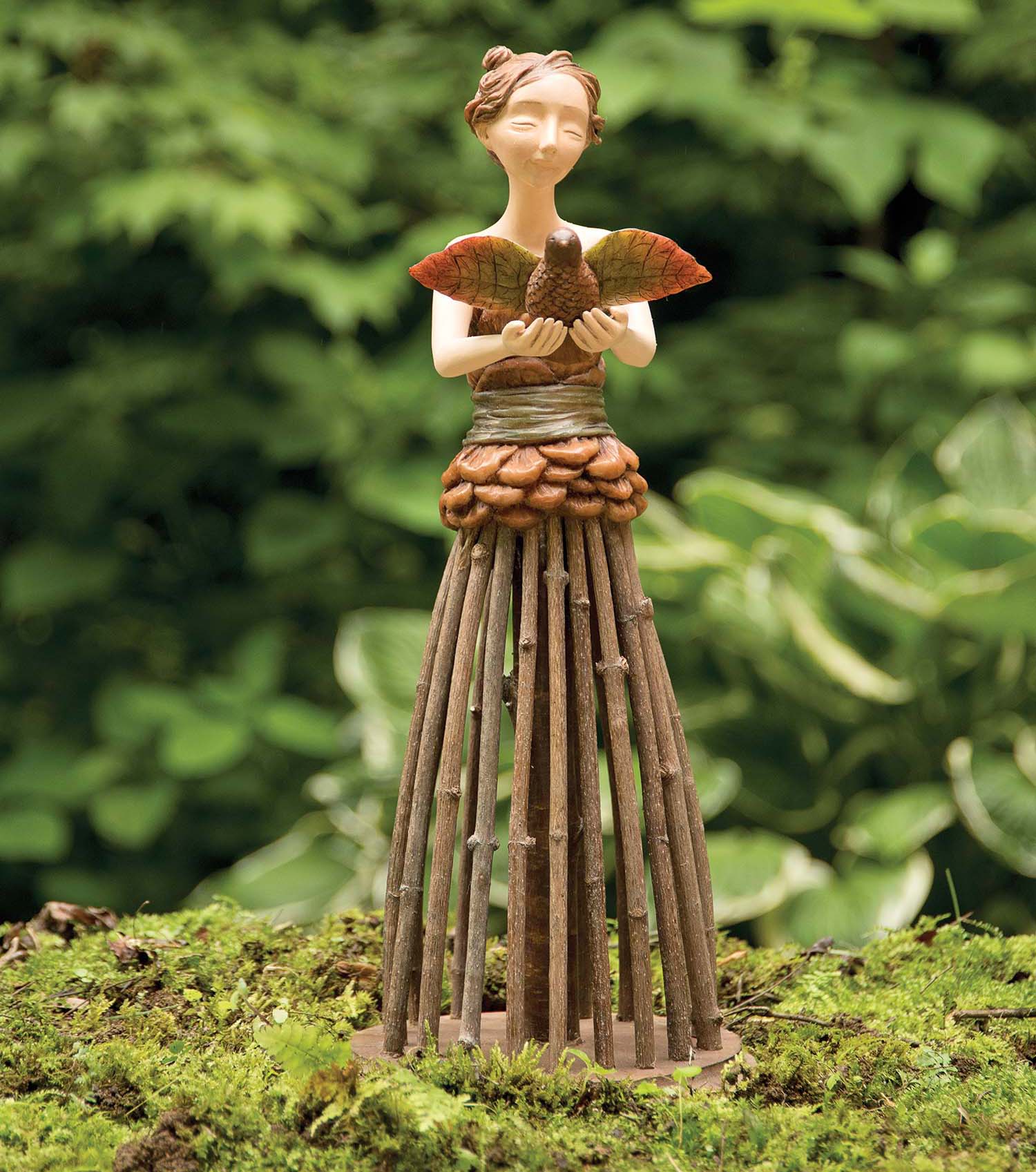
At a glance, it’s a statue of a woman. Her face is turned to the side as though she’s peering off into an unknown world. She carries a basket of apples — a hand rests on top to keep the bushel steady. The bodice of her dress is a pastoral brown, like on a farmer’s wife in a fairy tale. But as the dress reaches the bottom of the torso it twists into a nest-like ring and is replaced with multiple twigs forming the skirt.
It’s as though a dryad — the mythological tree nymph that morphs into an oak — is being caught mid-transformation. But really the opposite is happening. Holly Turner’s sculptures originate in the natural world and turn human. “Even as a 6-year-old sitting in church, when my mother would give me paper to draw on so that I wouldn’t get antsy, it was always people I would draw,” she remembers. “So when I started sculpting, it was natural for me to sculpt people.”

She started working with clay as a way to pass the time during summer vacation from college in 1991, and she’s continued to make dolls and other figures inspired from her backyard in Waynesville. Typically incorporating natural elements in unexpected ways — a bird with a pinecone body, a bird’s-nest dress bodice — her sculptures take on a folkloric quality. “I am inspired by anything with an organic feel,” she says. The subjects range from young, dreamlike women to St. Nick, but each one holds some sort of homage from the earth.

Turner starts with a lump of polymer clay that she molds with wooden sculpting tools, typically starting with what she considers the most important part: the face. From there she uses wires to create a skeleton for the limbs, leading down to the bottom part of the torso. The clay is then fired in her home oven, an advantage of using polymer, and finished off with a coat of acrylic paint and wax.
“Often my hands just seem to decide what to do on their own without me having to think about what the next step is,” she says. “It does help to trust my instincts. They’re not always right, and sometimes I have to go back and redo the work, but they usually lead me in the right direction.”
She stresses the importance of the character of each sculptural doll. Continuing with the folkloric nature of their build, Turner desires to create figures that are full of expression. Many of the faces take on an ethereal quality, reflecting her reverence of the whole process.
“I strive to bring a sense of joy,” says Turner. “I’m blessed that God has given me this ability and the opportunity to use it.”
Holly Turner, Twigs & Leaves Gallery, 98 North Main St., Waynesville (828-456-1940, twigsandleaves.com). Turner also accepts commissions. For more information, see hollyturnersculpture.com.